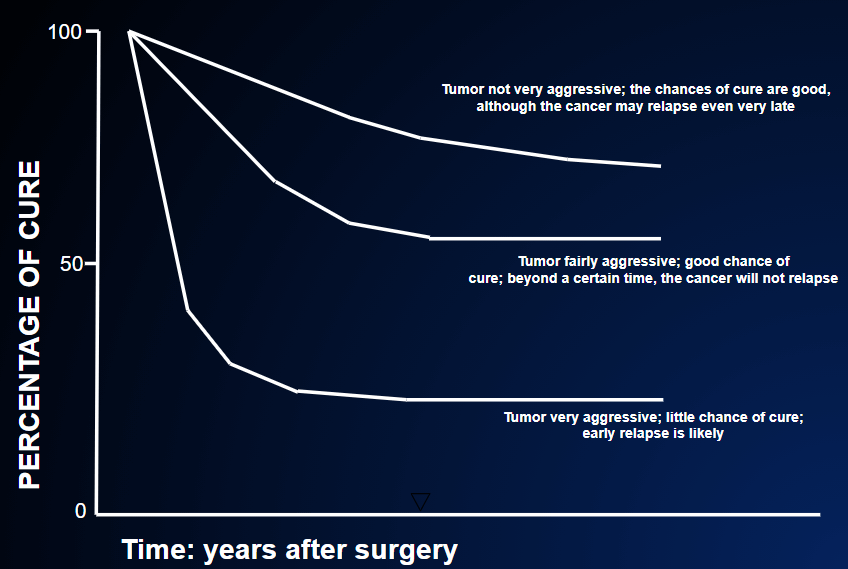THERE WAS A TUMOR, BUT THINGS ARE GOING WELL NOW
Play Video
The video explains the following schema
video explains the section's schema to view it click on the button you are here
This section is devoted to the more fortunate cases.
It must be said that these “more fortunate” cases are actually in the majority, in that today more than 50% of all cancer patients are cured. However, before we can say that a patient has been cured, we need to wait long enough to be able to rule out the possibility of relapse (usually 5 years but, in some tumors, 10 years or more).
Once the tumor has been surgically removed and any adjuvant treatment has been completed, the follow-up phase begins; during this phase, periodic examinations and tests are carried out. Patients who complete the follow-up period without relapse can be regarded as “cured”.
Usually, the follow-up period lasts 5 years.
During follow-up, the patient will normally be examined 2-3 times a year, in order to detect any possible relapse of the disease and to check that there are no long-term side-effects of any adjuvant therapies that may have been administered.
Follow-up examinations do not, in themselves, eliminate or reduce the possibility of relapse: they are only controls. Indeed, everything that can reduce the risk of relapse will have already been done – a good surgical operation and, when appropriate, adjuvant therapy.
These follow-up examinations, however, are a source of anxiety for the patient, as they are “milestones” on the road to cure.If all the follow-up examinations go well, it means that the patient is on the way to being cured. If, by contrast, a relapse is discovered, it means that the situation has suddenly worsened; the road towards cure is interrupted and the patient will have to start on a new, tough (but not desperate) pathway through the advanced phase of disease.
In short, cure is a diagnosis that needs time. Usually, about 5 years will need to pass before the patient can be regarded as cured (WE CAN FINALLY SAY WE ARE CURED).

Unfortunately, however, many tumors can relapse even a long time after the customary 5 years, although this rarely happens. FIGURE 12 illustrates this concept. Tumors of the pancreas, for example, are very aggressive and tend to relapse very early. Colon cancer, by contrast, is less aggressive and any relapse will occur much later. Moreover, colon cancer has much higher rates of cure than pancreatic cancer; in the figure, this is indicated by the much higher plateau on the curves of cure. Finally, breast cancer is generally less aggressive again, but relapses may occur even a very long time after surgery; this means that it is difficult to establish a moment when the patient can say she has been cured.
Finally, some really good news. In oncology, the word “cure” means exactly that; in other fields of medicine, this is not the case. Indeed, patients suffering from emphysema, heart failure or cirrhosis of the liver can never be completely cured; even if things go well, their life expectancy will never be as good as that of a healthy individual of the same age. In the case of cancer, it is different. When the tumor has been eliminated and the patient has been cured, he/she has really been cured, and life expectancy is identical to that of healthy individuals of the same age.
